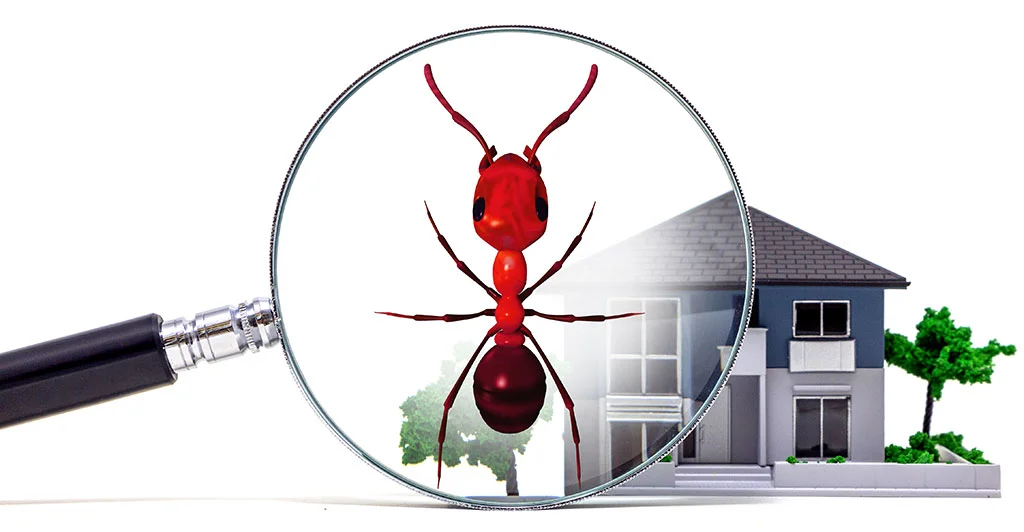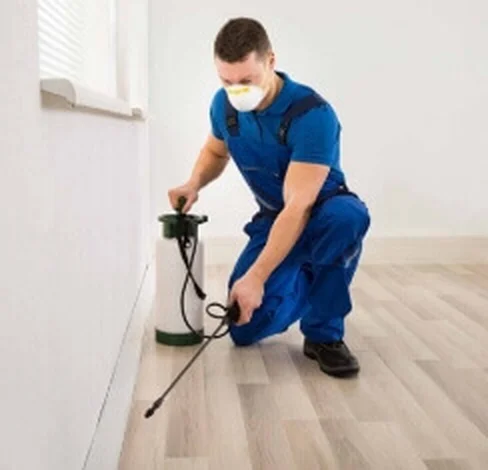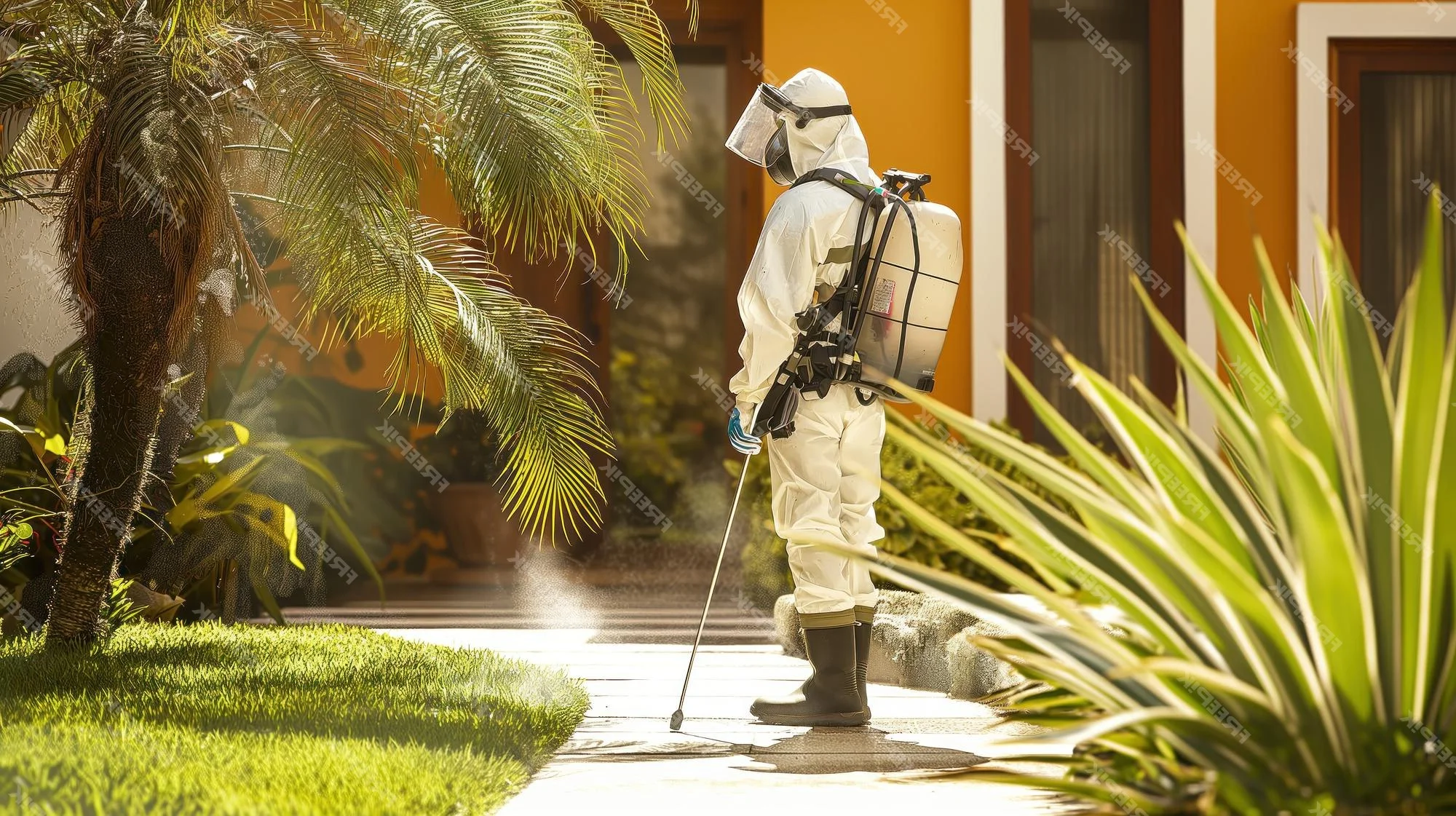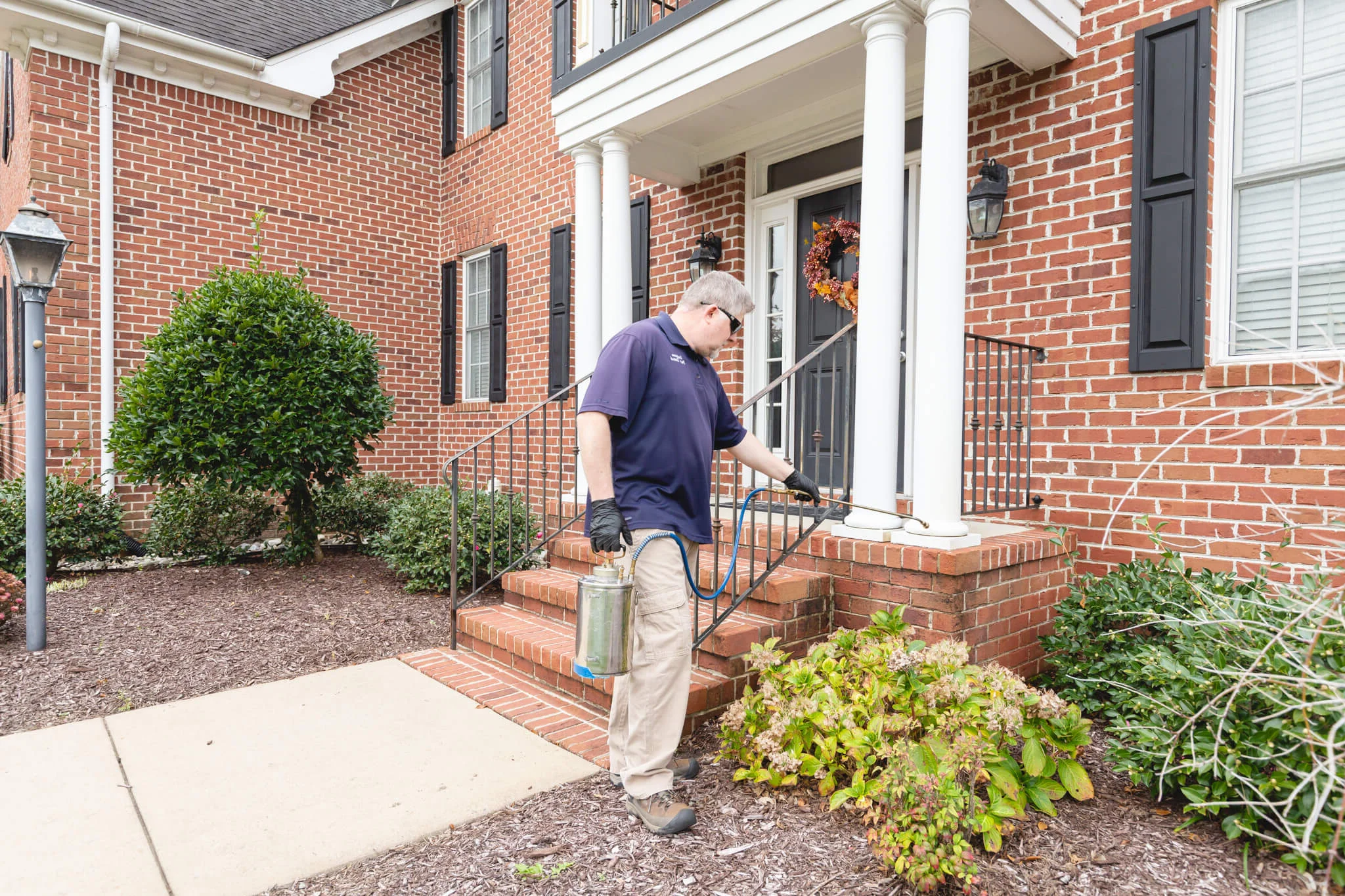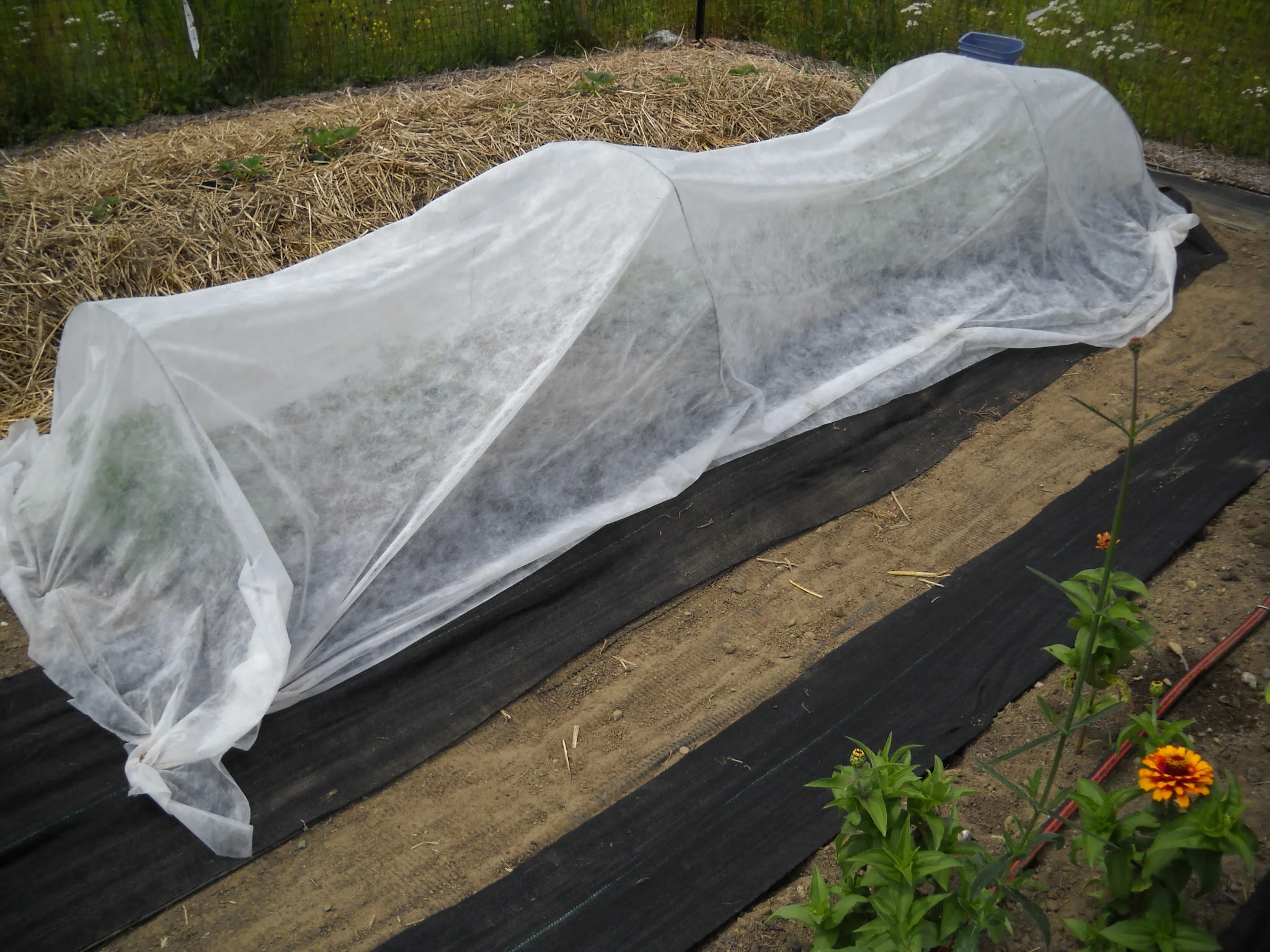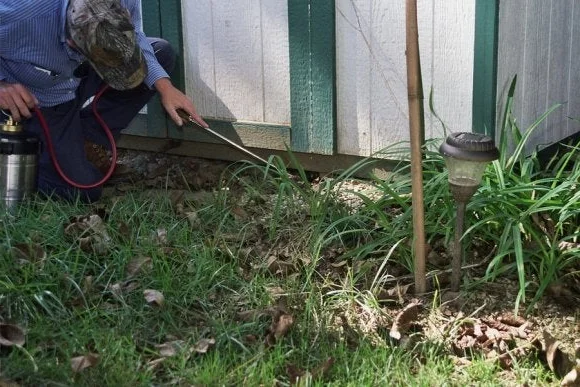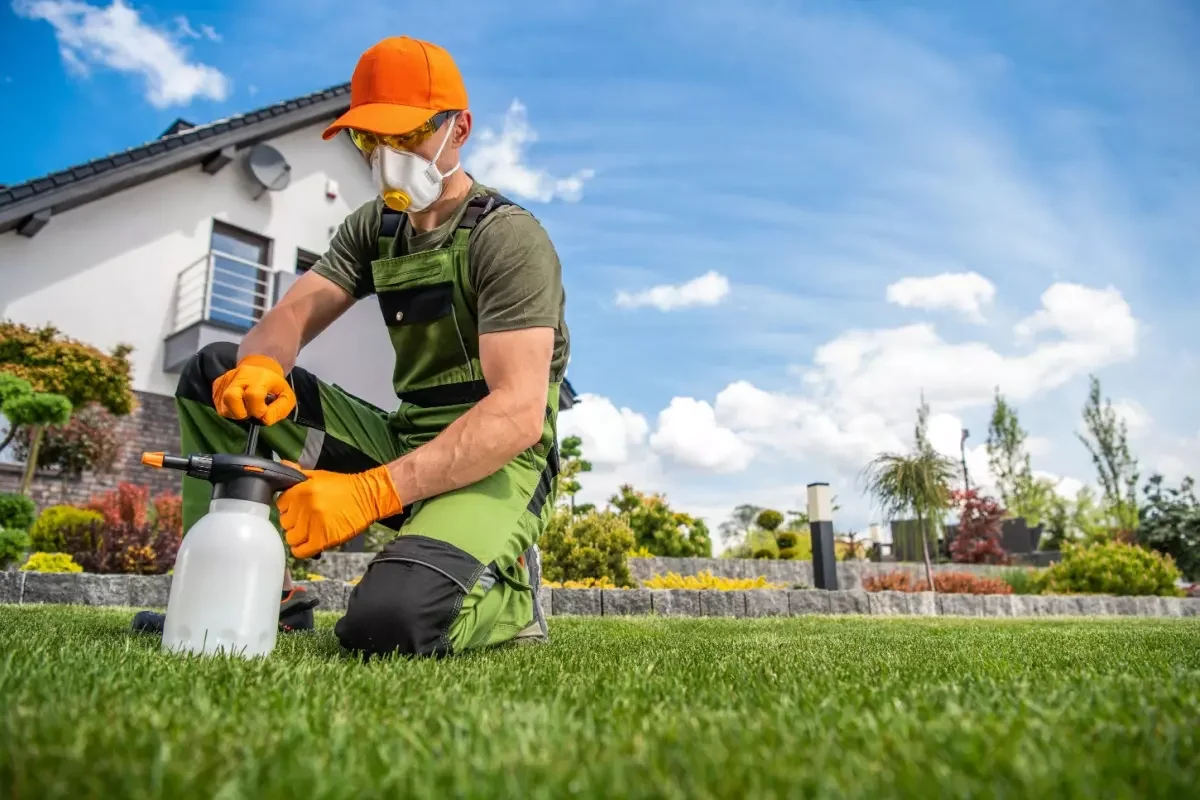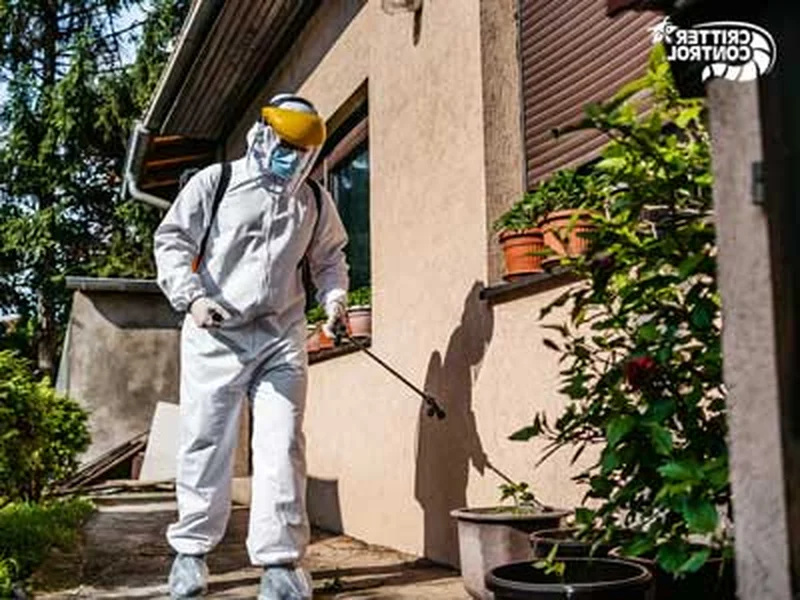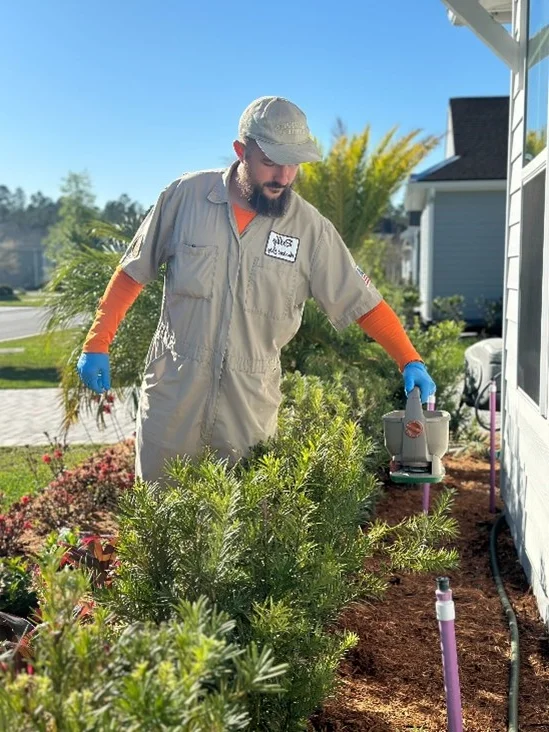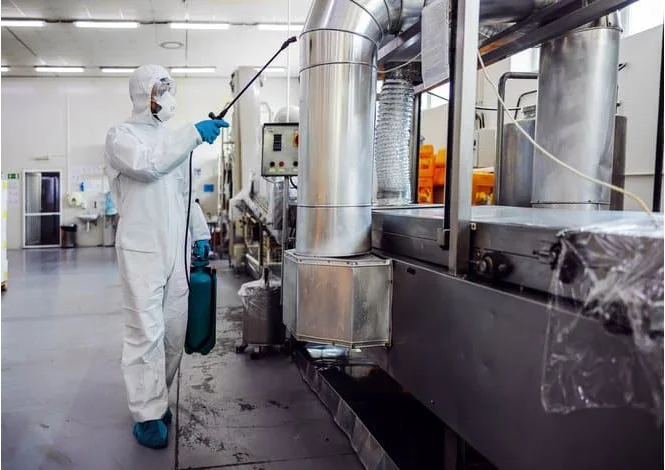Finding a scorpion in your home can be a frightening experience that demands immediate attention. These venomous arachnids pose serious health risks and can quickly establish populations in favorable environments. Unlike many pests that are merely nuisances, scorpions require specialized knowledge and treatment approaches due to their unique biology, hiding behaviors, and potential danger to humans and pets. Effective scorpion control combines understanding of scorpion ecology with targeted elimination strategies and comprehensive prevention measures.
Professional scorpion extermination addresses not just the scorpions you see, but the conditions that attract and sustain them on your property. From moisture sources and prey insects to shelter opportunities and entry points, comprehensive scorpion management requires a systematic approach that eliminates current infestations while preventing future problems. With the right expertise and treatment plan, properties can be effectively protected from these dangerous pests.
Scorpion emergency? Our specialists provide
emergency pest control
24/7 and immediate
scorpion treatment to protect your family's safety.
Call now for urgent scorpion control!
Understanding Scorpion Behavior and Risks
Scorpions are ancient arachnids that have survived for millions of years through remarkable adaptations that make them formidable pests. Understanding their biology and behavior is essential for effective control strategies:
-
Nocturnal hunters Scorpions are most active at night when they hunt for prey, making them difficult to detect during regular daytime activities. They use specialized sensory organs to locate insects, spiders, and other small creatures.
-
Excellent climbers Despite their ground-dwelling appearance, scorpions are skilled climbers that can scale walls, trees, and even inverted surfaces using specialized claws and leg structures.
-
Long-lived survivors Scorpions can live 2-6 years and survive months without food or water, making established populations persistent and difficult to eliminate through starvation methods.
-
Seasonal activity patterns Most species are more active during warmer months but can remain active year-round in heated structures, with peak activity often coinciding with mating seasons.
-
Social aggregation Some scorpion species gather in groups during winter months, leading to concentrated infestations in favorable shelter sites like wall voids and storage areas.
Professional scorpion pest control leverages this behavioral knowledge to target treatments when and where scorpions are most vulnerable, maximizing control effectiveness while minimizing environmental impact.
Common Scorpion Species and Identification
Different scorpion species present varying levels of risk and require specific control approaches. Proper identification is crucial for determining treatment urgency and methods:
Arizona Bark Scorpion
Expert scorpion identification and removal
The Arizona bark scorpion is the most medically significant species in North America, with venom that can cause serious health complications, especially in children, elderly individuals, and those with compromised immune systems. These pale, slender scorpions are excellent climbers and commonly found in homes throughout the southwestern United States.
Bark scorpions prefer tight spaces and are often found behind furniture, in closets, bedding, shoes, and towels. Their sting can cause intense pain, numbness, tingling, and in severe cases, breathing difficulties requiring immediate medical attention. Professional identification and emergency scorpion control are essential when this species is suspected.
Striped Bark Scorpion
Comprehensive scorpion inspection process
Striped bark scorpions are more widely distributed across the southern United States and are characterized by distinctive dark stripes on their backs. While their sting is less medically significant than bark scorpions, it still causes considerable pain and can trigger allergic reactions in sensitive individuals.
These scorpions are commonly found under rocks, logs, and debris around properties, but also readily enter structures seeking moisture and prey. They're particularly attracted to areas with good insect populations, making comprehensive pest prevention an important component of scorpion control programs.
Desert Hairy Scorpion
The largest scorpion species in North America, desert hairy scorpions can reach up to 6 inches in length. Despite their intimidating size, their sting is generally less potent than smaller species, causing pain similar to a bee sting in most individuals. However, their size and appearance make encounters particularly frightening for property occupants.
These scorpions prefer outdoor environments but may enter structures during extreme weather conditions or when following prey. Their presence often indicates favorable outdoor scorpion habitat that should be addressed as part of comprehensive property management strategies.
Forest Scorpion
Found primarily in southeastern states, forest scorpions prefer wooded areas with high humidity but readily adapt to residential environments with similar conditions. Their dark coloration makes them difficult to spot, and they often hide in leaf litter, mulch, and landscaping materials close to structures.
While their sting is considered mild compared to other species, forest scorpions can establish significant populations around homes with suitable habitat. Control programs focus on habitat modification and perimeter treatments to prevent population establishment near living areas.
Health Risks and Medical Concerns
24-hour emergency response for scorpion incidents
Scorpion stings represent a serious medical concern that requires immediate attention and professional pest control intervention. Understanding the symptoms and appropriate responses can be life-saving, particularly in areas where medically significant species are present. Scorpion control is not just about comfort—it's about protecting human health and safety.
The severity of scorpion envenomation varies significantly based on species, individual sensitivity, victim age and health status, and amount of venom injected. Professional pest control services work closely with medical professionals and poison control centers to provide comprehensive information about local scorpion species and treatment recommendations.
Medical Emergency Protocol
Any scorpion sting should be treated as a medical emergency. Seek immediate medical attention, especially for children, elderly individuals, or those with known allergies. Contact poison control and preserve the scorpion for identification if safely possible.
-
Immediate symptoms Pain at sting site, burning sensation, swelling, redness, and potential numbness or tingling that may spread from the sting location to other body areas.
-
Systemic reactions Difficulty swallowing, blurred vision, rapid heart rate, difficulty breathing, muscle twitching, and excessive salivation requiring immediate emergency medical care.
-
High-risk individuals Children under 6, adults over 65, pregnant women, and individuals with heart conditions, respiratory problems, or compromised immune systems face increased risk of severe reactions.
-
Long-term effects Some individuals may experience prolonged sensitivity, phantom pain, or psychological effects following scorpion encounters, emphasizing the importance of prevention.
-
Pet safety Dogs and cats are also vulnerable to scorpion stings, with small pets facing particularly high risks from envenomation requiring veterinary emergency care.
Professional Scorpion Treatment Methods
Specialized scorpion treatment application
Effective scorpion extermination requires specialized knowledge of scorpion biology, behavior patterns, and proven treatment methodologies. Professional technicians use targeted approaches that address scorpion populations at multiple life stages while ensuring safety for family members and pets. Unlike general pest treatments, scorpion control demands species-specific strategies and specialized equipment.
Professional treatments combine immediate population reduction with long-term prevention strategies, addressing both existing scorpions and the conditions that support their presence. This comprehensive approach ensures lasting results and provides property owners with confidence in their scorpion protection program.
| Treatment Method |
Application |
Effectiveness |
| Residual Barrier Treatments |
Perimeter applications around foundations, entry points, and key shelter areas
|
Provides 60-90 days of protection; highly effective against crawling scorpions contacting treated surfaces.
|
| Crack and Crevice Treatments |
Targeted applications in hiding places, wall voids, and tight spaces where scorpions shelter
|
Excellent for established infestations; reaches scorpions in protected areas where they spend most time.
|
| Dust Formulations |
Wall voids, attic spaces, and areas where liquid treatments aren't practical
|
Long-lasting protection in dry environments; excellent for treating inaccessible scorpion harborage areas.
|
| Habitat Modification |
Removing shelter sites, moisture sources, and prey populations that support scorpions
|
Essential for long-term control; reduces property attractiveness and carrying capacity for scorpions.
|
| Exclusion Work |
Sealing entry points, installing door sweeps, and screening openings
|
Prevents new infestations; critical component of integrated scorpion management programs.
|
Don't risk dangerous scorpion encounters. Our certified specialists provide
comprehensive scorpion pest control with guaranteed results –
schedule your treatment and protect your family today!
Interior vs Exterior Scorpion Control
Interior Scorpion Management
Comprehensive interior scorpion treatment
Interior scorpion control focuses on eliminating scorpions that have already entered structures and preventing additional intrusions. This requires careful attention to family and pet safety while providing effective scorpion elimination. Professional interior treatments use low-toxicity formulations applied to specific areas where scorpions travel and hide.
Key interior treatment areas include baseboards, closets, bathrooms, laundry rooms, and storage areas where scorpions commonly shelter. Technicians also address entry points like gaps around plumbing, electrical penetrations, and door thresholds that allow scorpion access to living spaces.
Exterior Perimeter Protection
Creating protective barriers against scorpions
Exterior treatments create protective barriers that intercept scorpions before they reach structures. These applications target foundation areas, landscaping zones, and outdoor shelter sites where scorpions commonly establish populations. Professional exterior treatments use weather-resistant formulations that maintain effectiveness through various environmental conditions.
Perimeter protection also addresses scorpion prey populations, reducing the food sources that attract and sustain scorpion populations near structures. By treating for insects and other arthropods that scorpions hunt, comprehensive programs reduce overall pest pressure and scorpion attraction to treated properties.
Seasonal Scorpion Activity and Control Timing
Spring (March-May)
- Increased activity as temperatures warm
- Mating season begins for many species
- Scorpions emerge from winter shelters
- Optimal time for exterior treatments
Recommendation: Schedule comprehensive perimeter treatments and property inspections before peak activity season.
Summer (June-August)
- Peak scorpion activity and encounters
- Young scorpions become independent
- Maximum shelter-seeking behavior
- Highest risk period for stings
Recommendation: Maintain active treatment programs and conduct regular monitoring for scorpion activity around structures.
Fall (September-November)
- Scorpions seek winter shelter sites
- Increased structural invasion attempts
- Ideal conditions for exclusion work
- Final generation reaches maturity
Recommendation: Focus on exclusion work and habitat modification to prevent winter establishment in structures.
Winter (December-February)
- Reduced activity in cooler climates
- Clustering behavior in warm areas
- Continued activity in heated structures
- Planning season for comprehensive programs
Recommendation: Plan comprehensive spring programs and address any indoor scorpion activity immediately.
Property Assessment and Risk Factors
Professional property assessment for scorpion risks
Professional scorpion risk assessment identifies conditions that attract and support scorpion populations around properties. Understanding these risk factors allows property owners to make informed decisions about prevention strategies and treatment priorities. Comprehensive assessments examine both obvious scorpion attractants and subtle environmental factors that contribute to scorpion problems.
Risk assessment also evaluates potential scorpion entry points, shelter opportunities, and population indicators that help technicians develop targeted treatment strategies. This scientific approach ensures that control efforts address root causes rather than just treating symptoms of scorpion problems.
-
Landscape evaluation Assessment of rock walls, decorative stones, mulch beds, and dense vegetation that provide ideal scorpion shelter and hunting grounds near structures.
-
Moisture source identification Location of irrigation systems, water features, leaky fixtures, and drainage problems that create the humid conditions scorpions require for survival.
-
Structural vulnerability analysis Examination of cracks, gaps, damaged screens, and other entry points that allow scorpion access to protected indoor environments.
-
Prey population assessment Evaluation of insect and spider populations that serve as food sources for scorpions and influence their distribution around properties.
-
Artificial shelter identification Documentation of storage items, equipment, and debris that create additional scorpion hiding places and breeding sites near living areas.
Integrated Pest Management for Scorpions
Integrated approach to scorpion management
Integrated Pest Management (IPM) for scorpions combines multiple control strategies to achieve maximum effectiveness while minimizing environmental impact and treatment costs. This science-based approach recognizes that sustainable scorpion control requires addressing ecological factors that support scorpion populations rather than relying solely on chemical treatments.
IPM programs emphasize prevention, monitoring, and targeted interventions that disrupt scorpion life cycles and reduce habitat suitability. By understanding scorpion ecology and environmental needs, IPM approaches provide longer-lasting results and reduce the likelihood of re-infestation.
Effective IPM for scorpions incorporates several complementary strategies:
| IPM Component |
Methods |
Benefits |
| Habitat Modification |
Remove shelter sites, reduce moisture, eliminate prey populations
|
Addresses root causes; provides long-term population reduction without ongoing chemical dependence.
|
| Exclusion Techniques |
Seal entry points, install barriers, modify structures to prevent access
|
Prevents new infestations; protects treated areas from re-invasion by scorpions from untreated areas.
|
| Monitoring Programs |
Regular inspections, trap monitoring, population assessment
|
Early detection of problems; allows targeted treatments before populations establish and spread.
|
| Targeted Treatments |
Precise application to scorpion harborage and travel areas
|
Maximum effectiveness with minimal environmental impact; reduces treatment costs and exposure risks.
|
| Education and Prevention |
Property owner training, maintenance recommendations
|
Empowers property owners to maintain control; prevents conditions that lead to re-infestation.
|
Emergency Scorpion Situations
Emergency response for urgent scorpion situations
Certain scorpion situations require immediate professional intervention to protect human safety and prevent population establishment. Emergency scorpion control services provide rapid response for high-risk situations where delayed treatment could result in serious health consequences or allow significant population growth.
Emergency situations often involve medically significant species, multiple scorpion encounters, or discoveries in high-risk areas like bedrooms, nurseries, or food preparation areas. Professional emergency response includes immediate treatment, safety assessment, and rapid implementation of control measures to eliminate immediate threats.
-
Multiple scorpion encounters Discovery of several scorpions within a short timeframe, indicating established populations requiring immediate comprehensive treatment to prevent continued encounters.
-
Scorpions in bedrooms or children's areas Any scorpion found in sleeping areas, nurseries, or play spaces requires immediate treatment due to high risk of contact during vulnerable periods.
-
Medically significant species identification Confirmed or suspected bark scorpions or other dangerous species require emergency treatment protocols to prevent serious envenomation incidents.
-
Recent sting incidents Properties where scorpion stings have occurred need immediate assessment and treatment to prevent additional encounters during medical recovery periods.
-
High-risk occupant situations Homes with young children, elderly residents, or individuals with health conditions requiring enhanced protection from scorpion encounters.
Emergency Response Protocol
Emergency scorpion situations receive priority scheduling with same-day or next-day service availability. Our emergency teams are equipped with specialized equipment and treatment materials for immediate population control.
What Our Clients Say About Scorpion Control
"After finding a scorpion in my daughter's bedroom, I called PestControl100 immediately. They treated our home the same day and explained everything about preventing future problems. Six months later, we're still scorpion-free!"
- Amanda T., Phoenix Homeowner
★★★★★
"Our new construction home had serious scorpion issues from day one. PestControl100's comprehensive program eliminated the problem and gave us peace of mind. Their technicians are knowledgeable and professional."
- Michael R., Tucson Resident
★★★★★
"We tried DIY scorpion control for months without success. PestControl100's systematic approach worked where our efforts failed. The difference was immediate and lasting. Highly recommend their services."
- Sandra L., Las Vegas Homeowner
★★★★★
Frequently Asked Questions
How dangerous are scorpion stings, and when should I seek medical attention?
Scorpion sting severity varies by species, but all stings should be taken seriously. Seek immediate medical attention for any scorpion sting, especially if the victim is a child, elderly, or has health conditions. Arizona bark scorpion stings can be life-threatening and require emergency treatment. Symptoms like difficulty breathing, muscle twitching, or severe pain spreading from the sting site require immediate emergency medical care.
How effective are professional scorpion treatments compared to DIY methods?
Professional scorpion control is significantly more effective than DIY approaches because it addresses scorpion biology, behavior, and ecology comprehensively. Professionals use specialized products not available to consumers, understand scorpion hiding places and travel patterns, and implement integrated strategies that eliminate existing populations while preventing new infestations. DIY methods often provide only temporary relief and may miss critical areas where scorpions shelter.
How long does scorpion treatment take to be effective?
Initial scorpion population reduction typically occurs within 2-4 weeks of professional treatment, with continued improvement over 60-90 days as treatments affect scorpions throughout their territory. Complete control may take 2-3 treatment cycles for established populations. Emergency treatments can provide immediate protection for high-risk areas, but sustainable control requires ongoing treatment and prevention measures to maintain protection levels.
What can I do to prevent scorpions from entering my home?
Scorpion prevention involves eliminating shelter sites, moisture sources, and entry points. Remove rocks, wood piles, and dense vegetation near your home's foundation. Seal cracks and gaps around doors, windows, and utility penetrations. Install door sweeps and repair damaged screens. Reduce outdoor lighting that attracts insects scorpions hunt. Most importantly, maintain a dry perimeter around your home and eliminate standing water sources.
Scorpion Prevention and Property Management
Comprehensive perimeter protection against scorpions
Effective scorpion prevention requires understanding the environmental factors that attract and sustain scorpion populations around properties. Professional prevention programs address these factors systematically, creating conditions that are unfavorable for scorpion establishment while maintaining property aesthetics and functionality.
Prevention strategies focus on long-term habitat modification rather than reactive treatments, providing property owners with sustainable protection that reduces ongoing scorpion risks and treatment costs. These approaches work best when implemented as part of comprehensive property management plans.
-
Landscaping modifications Replace scorpion-friendly features like rock gardens and dense groundcover with alternatives that provide less shelter while maintaining aesthetic appeal and property value.
-
Irrigation management Adjust watering schedules and methods to reduce moisture accumulation around foundations and eliminate the humid conditions that attract scorpions and their prey.
-
Storage area organization Properly organize outdoor storage areas, elevate materials off the ground, and eliminate clutter that provides scorpion hiding places near structures.
-
Lighting modifications Install yellow or sodium vapor lights that attract fewer insects, reducing the prey populations that draw scorpions to structures during nighttime hunting.
-
Regular maintenance schedules Establish routine property maintenance practices that identify and address scorpion attractants before they become established problems.
Commercial Scorpion Control Services
Professional commercial scorpion management
Commercial properties face unique scorpion challenges that require specialized management approaches addressing liability concerns, employee safety, and business continuity. Commercial scorpion control must comply with industry regulations while providing effective protection for larger, more complex structures and varied use patterns.
Businesses in scorpion-active regions need proactive management programs that prevent scorpion encounters in work areas, customer spaces, and storage facilities. Professional commercial services include risk assessment, employee training, and emergency response protocols tailored to specific business needs and regulatory requirements.
Industry-Specific Challenges
-
Hospitality and tourism Hotels, resorts, and recreational facilities require discreet, comprehensive scorpion control that protects guests while maintaining aesthetic appeal and avoiding disruption to operations.
-
Healthcare facilities Medical facilities need specialized approaches that consider patient safety, medication interactions, and the vulnerability of individuals with compromised health status.
-
Food service operations Restaurants and food processing facilities require scorpion control methods that comply with food safety regulations while providing effective protection in sensitive environments.
-
Educational institutions Schools and childcare facilities need enhanced protection protocols that prioritize child safety while providing educational opportunities about scorpion awareness.
-
Industrial and warehouse facilities Large facilities require cost-effective approaches that address scorpion populations in storage areas, loading docks, and employee work spaces.
Advanced Scorpion Detection and Control Technology
Cutting-edge technology for scorpion detection and control
Modern scorpion pest control incorporates advanced technology to improve detection accuracy, treatment precision, and monitoring effectiveness. These technological advances provide property owners with better results, enhanced safety, and improved long-term protection from scorpion populations.
Technology-enhanced scorpion control represents the evolution of pest management from reactive treatments to proactive, science-based approaches that leverage data and precision targeting for optimal results with minimal environmental impact.
-
UV blacklight detection Specialized ultraviolet lights cause scorpions to fluoresce, making them visible during nighttime inspections and allowing precise identification of population distribution and activity patterns.
-
Thermal imaging technology Advanced cameras detect scorpion heat signatures in wall voids, insulation, and other concealed areas where visual inspection is impossible or impractical.
-
Motion-activated monitoring Automated detection systems alert property owners and pest control professionals to scorpion activity in treated areas, enabling rapid response to new infestations.
-
Precision application equipment Specialized tools ensure accurate treatment placement in scorpion harborage areas while minimizing exposure to non-target areas and reducing environmental impact.
-
Digital tracking and documentation Comprehensive record-keeping systems track treatment effectiveness, population trends, and seasonal patterns to optimize control strategies over time.
Scorpion Control Investment and Long-term Value
Professional scorpion extermination represents a critical investment in family safety, property protection, and peace of mind. Understanding the factors that influence treatment costs helps property owners make informed decisions about scorpion control services and timing.
| Cost Factor |
Influence on Price |
Long-term Value |
| Property Size and Complexity |
Larger properties and complex structures require more time and materials for comprehensive treatment
|
Thorough treatment of entire property provides complete protection and prevents population migration between areas.
|
| Infestation Severity |
Established populations may require multiple treatments and specialized approaches for complete elimination
|
Complete elimination prevents ongoing encounters, medical risks, and the need for repeated emergency treatments.
|
| Species Type and Risk Level |
Medically significant species require enhanced safety protocols and specialized treatment approaches
|
Species-specific treatment ensures effective control and minimizes health risks from dangerous scorpion encounters.
|
| Prevention and Exclusion Work |
Comprehensive habitat modification and exclusion increase initial investment but provide lasting protection
|
Prevention work eliminates ongoing treatment needs and provides years of protection from new infestations.
|
| Ongoing Maintenance Programs |
Regular monitoring and maintenance treatments spread costs over time while maintaining protection levels
|
Maintenance programs prevent population re-establishment and provide consistent protection at lower overall cost.
|
Health and Safety Investment
Professional scorpion control costs significantly less than emergency medical treatment for scorpion stings, potential liability issues, and the ongoing stress of living with dangerous pest populations.
Protect your family from dangerous scorpion encounters. Trust PestControl100 for comprehensive
scorpion control that eliminates current problems and prevents future infestations –
contact us today for immediate protection and peace of mind!
Scorpion Control Service Areas
Our certified scorpion specialists provide comprehensive control services throughout regions with active scorpion populations. We understand local species, seasonal patterns, and environmental factors that influence scorpion activity in your area.
Southwest Expertise
Our scorpion control specialists have extensive experience with desert climates and the unique challenges of southwestern scorpion species. We understand the environmental conditions that support scorpion populations and provide targeted solutions for regional species and seasonal patterns.
Year-Round Protection
In warmer climates where scorpions remain active throughout the year, our programs provide continuous protection with seasonal adjustments for peak activity periods. We monitor population trends and adjust treatment strategies to maintain optimal protection levels.
Our Scorpion Control Coverage Map


